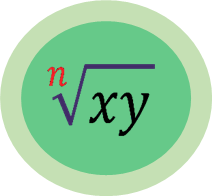Mathematics

 Mathematics is present in all aspects of our daily lives. Students use mathematical thinking and reasoning to make sense of the world around them and to solve problems big and small. From planning weekly budgets and grocery shopping to an architect using math to understand how shape and structure affect the strains and stresses on a building, mathematical thinking is essential to daily life and employment.
Mathematics is present in all aspects of our daily lives. Students use mathematical thinking and reasoning to make sense of the world around them and to solve problems big and small. From planning weekly budgets and grocery shopping to an architect using math to understand how shape and structure affect the strains and stresses on a building, mathematical thinking is essential to daily life and employment.
The BC K-12 Curriculum in Mathematics aims to ensure effective numeracy and robust mathematical habits of mind for all learners.
On this page:
- Mathematics Curriculum – Students with Visual Impairments
- Connections to the Expanded Core Curriculum
- Resources to Support Instruction
- References
 Check out the Mathematics Curriculum category in #Outreaching - the blog of the PRCVI Outreach Team.
Check out the Mathematics Curriculum category in #Outreaching - the blog of the PRCVI Outreach Team.
Mathematics - Students with Visual Impairments
Students with visual impairments are able to learn math with the support of a variety of teaching/learning strategies and tools for access and concept development (Smith, 2017). As mathematics is often visual or spatial in nature, it is essential for students with visual impairments to have ample opportunities and time to develop these mathematical concepts. Mathematical aids such as the abacus, talking graphing calculator, tactile graphics and accessible manipulatives can be used to support math learning for students with visual impairments.
Examples of Adaptations for Mathematics
- Use real objects or manipulatives to support concrete concepts like number sense, sorting, and basic operations like addition, subtraction, multiplication and division.
- Use adapted measurement tools to measure volume or distance.
- Introduce the abacus in a systematic way to promote speed and accuracy in performing calculations.
Connections to the Expanded Core Curriculum
Knowledge and skill development in the Core and Expanded Core Curricula are mutually reinforcing and together enrich student learning. Below are examples of connections between Mathematics and the ECC.
Access Technology
- Using web-based applications to explore digital graphics using sonification.
- TSVI and student connecting via videoconferencing to review a digital accessible math worksheet.
- Student uses a talking graphing calculator to complete a homework assignment.
 Independent Living Skills
Independent Living Skills
- Students use knowledge of proportion and volume when measuring ingredients to bake cupcakes.
- Students practice counting skills by sorting socks they have just laundered.
- Students calculating interest on a deposit made to a savings account.
 Orientation and Mobility
Orientation and Mobility
- Students use knowledge of special concepts when writing numeric notations, equations or formulas like an equation that includes fractions and exponents.
- Mathematical concepts such as time, distance, and geometry aid a student in understanding tactile maps and the organization of spatial environments.
- Learning the numbering system of home or business addresses in a student's community.
Resources to Support Instruction
PRCVI Library Catalogue
- American Printing House. (2017). Tactile algebra tiles. [Resource Kit]
- The Tactile Algebra Tiles kit is an adapted version of traditional algebra tiles. Tiles feature tactile markers and high contrast colours.
- American Printing House. (2018). Quick picks math: Addition UEB. [Resource Kit]
- Quick picks are kits of math flash cards similar to those used to teach UEB contractions.
- American Printing House. Mathbuilders. [Resource Kit] – See PRCVI online catalogue for all units.
- Mathbuilders is a series of kits of manipulable materials for teaching basic math concepts to blind learners. Units range from matching/sorting to fractions/mixed numbers/decimals.
- Kapperman, G., Heinze, T., & Sticken, J. (1997). Strategies for Developing Mathematics Skills in Students Who Use Braille. Sycamore, IL: Research and Development Institute, Inc. [Professional Resource]
- Professional text with strategies for teaching math concepts. Please note: Simbraille content is in Nemeth Code - a defunct code for technical content in braille that was formerly taught in Canada.
- Mani., M. N. G (2005). Mathematics made easy for children with visual impairment. International Council for Education of People with Visual Impairment (ICEVI). [Professional Resource]
- Resource guide of adaptions for math instruction from ICEVI.
- Math Window (2019). Math Window: Mathematics Teaching Tools for Blind and Visually Impaired Students. [Resource Kit] – See PRCVI catalogue for all kits.
- Math Window is a magnetic board with tiles featuring both print/braille math labels. Students combine numbers, operators, and other symbols to create expressions. All kits in the PRCVI collection are UEB-compatible.
Web-Based Resources
- Brawand, A., & Johnson, N. (2016). Effective methods for delivering mathematics instruction to students with visual impairments. Journal of Blindness Innovation & Research, 6. Accessed at https://www.nfb.org/images/nfb/publications/jbir/jbir16/jbir060101.html
- Overview article relevant to mathematics educators who are new to working with students with visual impairments.
- Iowa Educational Services for the Blind and Visually Impaired – Math For Students who are Blind or Visually Impaired
- A collection of curated resources that include abacus, calculators and iOS apps
- Klingenberg, O. G., Holkesvik, A. H., & Augestad, L. B. (2019). Research evidence for mathematics education for students with visual impairment: A systematic review. Cogent Education, 6(1), 1626322.
- Meta-analysis examining studies of mathematics education for students with visual impairments published between 2000 and 2017.
- Brawand, A.E., Johnson, N. & Kolvites J. (2015). Alignment of mathematical skills to instructional tools for students with visual impairments. Retrieved from https://www.pathstoliteracy.org/resources/alignment-mathematical-skills-instructional-tools-students-visual-impairments
- Handout from authors' presentation at the 2015 Council for Exceptional Children convention connecting specialized tools to math content learning.
- Smith, D. W. (2006). Developing mathematical concepts through orientation and mobility. RE VIEW, 37(4), 161.
- Article connecting O&M strategies and techniques to math instruction and NCTM (US) standards.
- Stone, B. W., Kay, D., & Reynolds, A. (2019). Teaching visually impaired college students in introductory statistics. Journal of Statistics Education, 27(3), 225-237.
- Article provides an overview of methods and materials for adapting statistics instruction to post-secondary learners. Most strategies are relevant to learners at the secondary school level.
- Texas School for the Blind and Visually Impaired – Resources - Math
- Teaching strategies to for working with students with visual impairments including topics such as inclusive strategies, challenges in teaching math, teaching geometric constructions and other topics.
- ViewPlus – Audio Graphing Calculator Tutorials [ported from the Subject page on PRCVI website]
- Calculator Tutorial - Audio Graphing Calculator (PDF)
Evaluator Tutorial - Audio Graphing Calculator (PDF)
Graphing Tutorial - Audio Graphing Calculator (PDF)
Matrix Tutorial - Audio Graphing Calculator (PDF)
References
Smith, D. W. (2017). Mathematics. In Foundations of Education (3rd ed., Vol. 2, pp. 479–509). New York, NY: AFB Press, American Foundation for the Blind.
Quicklinks